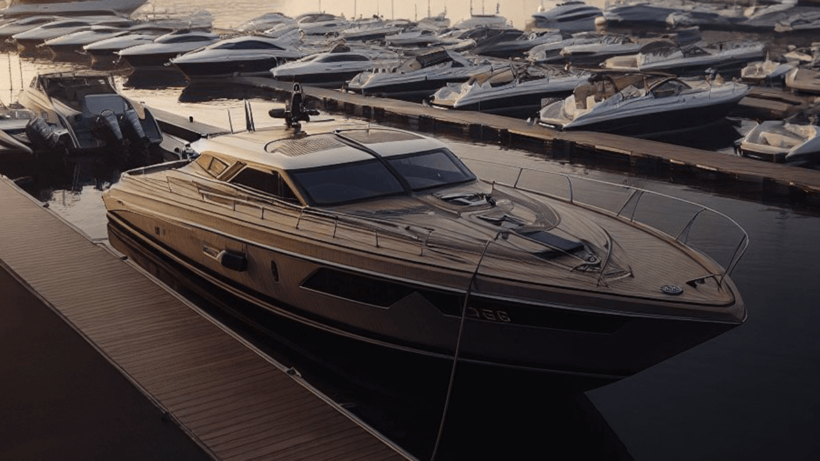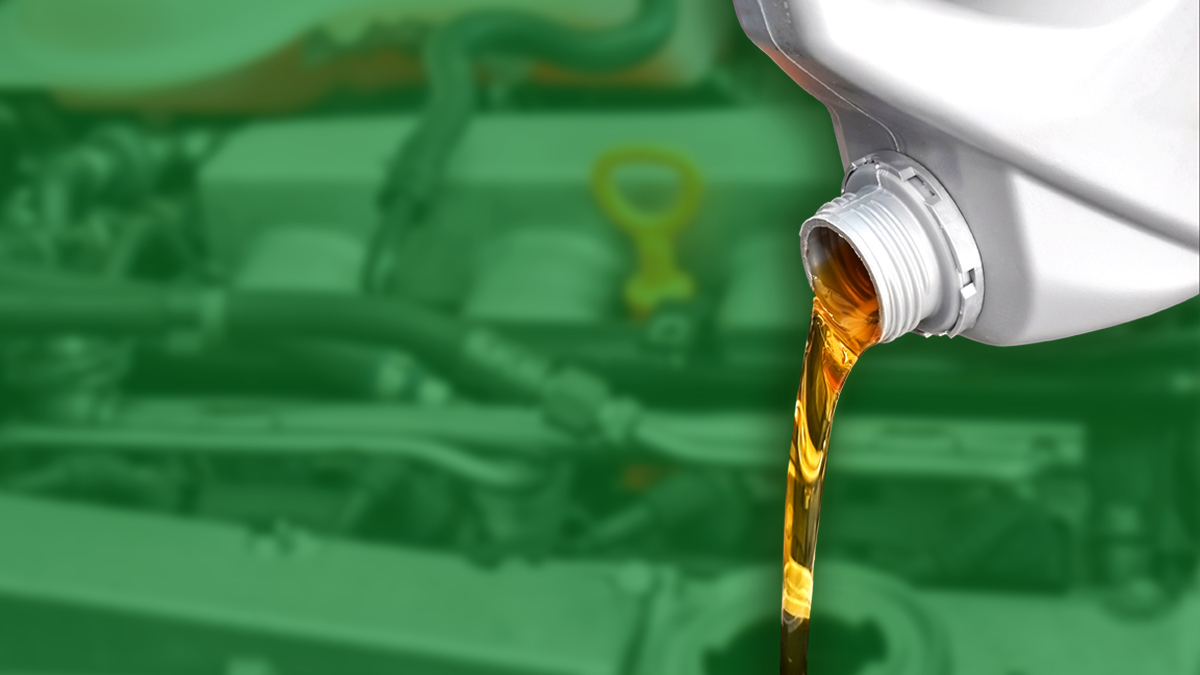Buying a used boat can be very exciting. It allows you to explore the open waters without breaking the bank. Before making a purchase though, it’s important to do thorough research and inspect the used boat history. Checking for any potential damages or mechanical issues helps to ensure a smooth sailing experience. Additionally, obtaining a used boat history report will help you reveal such factors as the vessel’s specifications and maintenance cost. This allows for making an informed decision and avoiding any unexpected situations or expenses in the future. As a reliable VIN lookup platform, we at ClearVin will guide you through the process of uncovering a used boat’s history by checking its hull identification number.
What Is a HIN Number on a Boat?

A hull identification number (HIN) is a unique combination of digits assigned to a boat, comparable to a vehicle identification number (VIN) on a car. You can find the watercraft identification number (WIN) as an alternative term. The used boat HIN consists of either 12 or 14 characters that are specifically designed to identify a boat. As of November 1, 1972, all vessels produced or brought into the United States are mandated to have a hull identification number. This unique code is important to the boat registration process.
The used boat HIN contains all the essential details about the vessel. It identifies the manufacturer, boat specifications, production date, and other important characteristics. Understanding what a boat HIN means can help vessel owners, potential buyers, and even law enforcement answer questions about boat ownership, maintenance, and security.
Where Is the HIN Number on a Boat?
The hull identification number (HIN) is usually found molded into the hull of a boat on the right side of the rear transom. It can also be affixed to other locations, such as the engine mounting brackets.
The Boat HIN Structure
If you are on the market considering used boats for sale, the best way to uncover the vessel’s details is to understand the boat HIN structure and decode it. The HIN consists of three sections: the manufacturer’s identification code, a six-digit serial number, and a code signifying the month and year of production. The manufacturer’s code is assigned to boat builders and is unique to each particular manufacturer. It helps identify who built the boat, providing valuable information about its quality and reputation.
The six-digit serial number that follows the manufacturer’s code is used to identify individual boats produced by that manufacturer. It also points out the production order, allowing for easy identification in case of recalls or warranty claims.
The final section of the used boat HIN represents the month and year the boat was produced. When decoded comprehensively, these digits provide valuable information.
Boat HIN Uses
A hull identification number should be documented on the vessel’s title and registration when purchased, making it a tool for verification of ownership. When obtaining insurance coverage for the boat, the boat HIN number is also necessary, allowing insurance providers to verify the vessel’s background. The boat HIN history helps insurers provide quotes and decide on necessary coverage.
The HIN is a vital tool for preventing salvage boat theft and unlawful activity. Law enforcement authorities can easily track and trace a stolen boat by using its hull identification number. That is why legal authorities from many countries work together and share HINs to identify stolen vessels, making it an essential tool in marine law enforcement.
The used boat HIN is also important for vessel owners and mechanics when it comes to maintenance and repairs. It provides access to historical data on the original equipment and used boat specifications, allowing experts to pick up proper used boat parts. This makes replacements and repairs accurate and compatible. It also aids in checking any service records or recalls that were applied to the boat.
How to Verify the History of a Used Boat

To avoid potential issues when purchasing a pre-owned boat, it’s essential to conduct a thorough check on the vessel’s background. At ClearVin, we are here to assist you in navigating the process of examining a used boat history.
Requesting Ownership Documentation
Initiate contact with the current owner or seller and request ownership documentation, which should include the used boat title, registration, and any transfer of ownership documents. Check these papers carefully to ensure they align with the vessel’s particulars and the seller’s assertions. Resolve any discrepancies before proceeding with the purchase.
Reviewing Maintenance Documentation and Receipts
Gain valuable insights into the vessel’s care by requesting maintenance logs, receipts, and relevant documentation showcasing repairs, upgrades, and regular servicing from the owner. A well-documented used boat maintenance history reflects a responsible owner, boosting your confidence in the boat’s overall condition.
Gathering Accident Reports and Insurance Claims
You can also find out more about the boat’s accident history by collecting accident reports and insurance claims associated with it and stated in a used boat history report. Reach out to relevant authorities or insurance companies for this information, as accidents can have lasting effects on a boat’s structural integrity and performance.
Inspecting the Boat for Visible Damage
While documents offer valuable information, you should also physically inspect the boat. Inspect for visible signs of damage such as cracks, dents, or repairs indicating underlying issues. Pay close attention to the hull, engine, and electrical systems and verify whether everything is matched with the specs stated in the used boat history report. If uncertain, consider hiring a professional marine surveyor for a comprehensive inspection.
Consulting a Marine Surveyor
Engage a certified marine surveyor to assess the boat’s overall condition, including its structural integrity, mechanical components, and safety features. Their unbiased evaluation can be especially valuable for older or higher-end boats, aiding in making an informed decision.
Checking for a Clear Title
Before finalizing the purchase, ensure the boat has a clear title by conducting a title search through relevant local or state authorities. You can also find more details about the used boat title by running a boat HIN lookup. A clear title signifies no outstanding legal disputes, claims, or liens against the boat.
Searching for Existing Liens
In addition to checking the used boat title, search for any existing liens on the boat. Liens indicate outstanding debts that need resolution before assuming ownership. Thoroughly investigate the boat’s lien status to avoid unexpected financial liabilities.
Reviewing Service Records
Service records act as a boat’s medical history, revealing if it received regular check-ups and maintenance. Look for documentation of routine services like oil changes, engine inspections, and general upkeep.
Examining Repair History
Alongside service records, examine any repair history or major overhauls to understand significant issues the boat has faced. By performing a boat HIN search, you can find more relevant details about the repairs. You should pay particular attention to repairs related to essential components like the engine, hull, and electrical system.
Inspecting the Boat’s Previous Insurance Claims
Look for any insurance claims to uncover past accidents or damage. Evaluate the severity of incidents by using your judgment and expertise to determine if the boat’s history aligns with your needs.
Utilizing Online Tools and Resources for Boat History Checks
Take advantage of a reliable online resource, such as a boat HIN database or boat HIN number lookup. Such services can help you gather comprehensive information on a used boat’s background. They provide ownership history, accident records, and other crucial details for a holistic view of the boat’s history.
Summing Up
A hull identification number on a boat acts as an important identification tool for a variety of functions. It contains information such as the boat’s maker, production date, and other important features. The boat HIN is required for verifying vessel ownership, registration, and issuing insurance, as well as for preventing illegal activity. It is also a useful tool for maintenance and repairs. That is why being aware of the uses and significance of a used boat history report can guarantee a smooth pre-owned vessel buying and maintenance experience.
ClearVin is your reliable partner in checking used vehicle backgrounds. Make use of our free VIN decoder and license plate search. Getting a vehicle history report with us is as easy as pie. Along with that, you can be sure that all the data we provide our customers with is relevant and reliable. It is possible to contact us online if you have any questions concerning the VIN check. Alternatively, you can call us at +1 (844) 268-5991 (8:00 AM – 3:00 PM EST, Monday to Friday).









